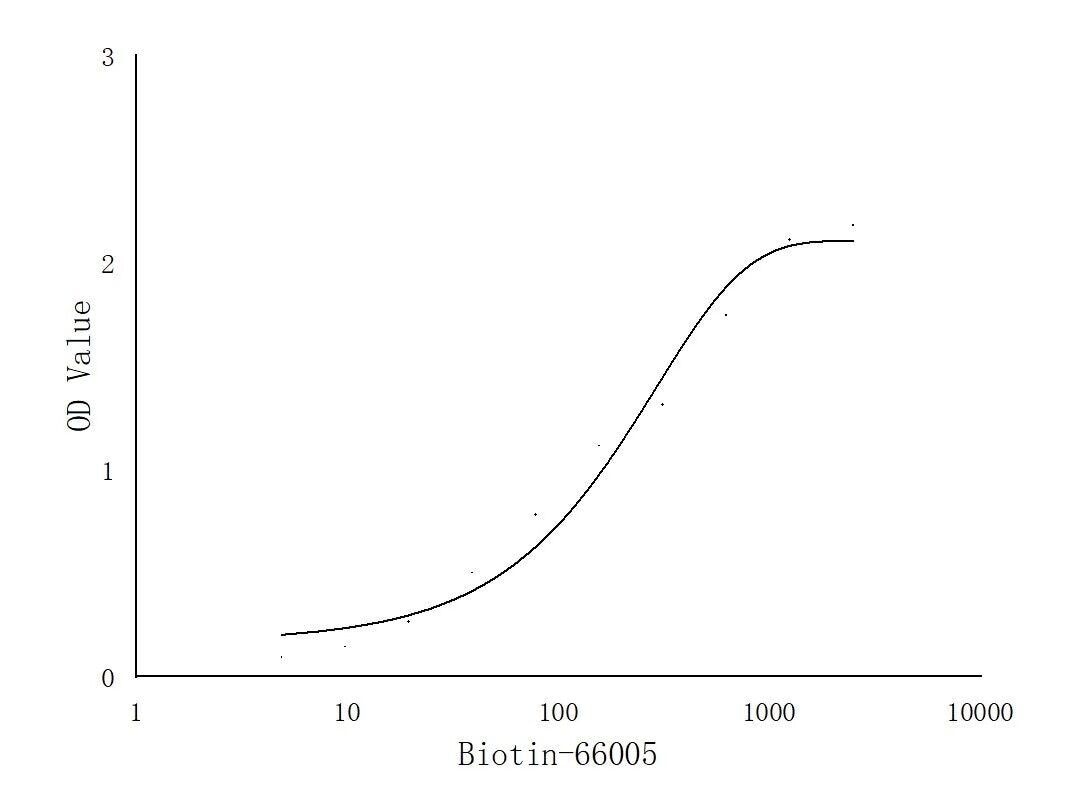Anticorps Monoclonal anti-6*His, His-Tag
6*His, His-Tag Monoclonal Antibody for ELISA
Hôte / Isotype
Mouse / IgG1
Réactivité testée
Protéine recombinante
Applications
ELISA
Conjugaison
Biotin
CloneNo.
1B7G5
N° de cat : Biotin-66005
Synonymes
Galerie de données de validation
Applications testées
| Résultats positifs en ELISA | Protéine recombinante |
Dilution recommandée
| Application | Dilution |
|---|---|
| Test immuno-enzymatique (ELISA) | ELISA : 1:5000-1:50000 |
| It is recommended that this reagent should be titrated in each testing system to obtain optimal results. | |
| Sample-dependent, check data in validation data gallery | |
Informations sur le produit
Biotin-66005 cible 6*His, His-Tag dans les applications de ELISA et montre une réactivité avec des échantillons Protéine recombinante
| Réactivité | Protéine recombinante |
| Hôte / Isotype | Mouse / IgG1 |
| Clonalité | Monoclonal |
| Type | Anticorps |
| Immunogène | Peptide |
| Nom complet | 6*His, His-Tag |
| Masse moléculaire calculée | 0.84 kDa |
| Symbole du gène | |
| Identification du gène (NCBI) | |
| Conjugaison | Biotin |
| Forme | Liquide |
| Méthode de purification | Purification par protéine G |
| Tampon de stockage | PBS with 50% glycerol, 0.05% Proclin300, 0.5% BSA |
| Conditions de stockage | Stocker à -20 °C. Éviter toute exposition à la lumière. Stable pendant un an après l'expédition. L'aliquotage n'est pas nécessaire pour le stockage à -20oC Les 20ul contiennent 0,1% de BSA. |
Informations générales
Protein tags are protein or peptide sequences located either on the C- or N- terminal of the target protein, which facilitates one or several of the following characteristics: solubility, detection, purification, localization and expression. His-tag is often used for affinity purification and binding assays. Expressed His-tagged proteins can be purified and detected easily because the string of histidine residues binds to several types of immobilized metal ions, including nickel, cobalt and copper, under specific buffer conditions. The His-tag antibody is a useful tool for monitoring of the His-tagged proteins, and recognizes His-tags placed at N-terminal, C-terminal, and internal regions of fusion proteins expressed in bacteria, insect, and mammalian cells.


